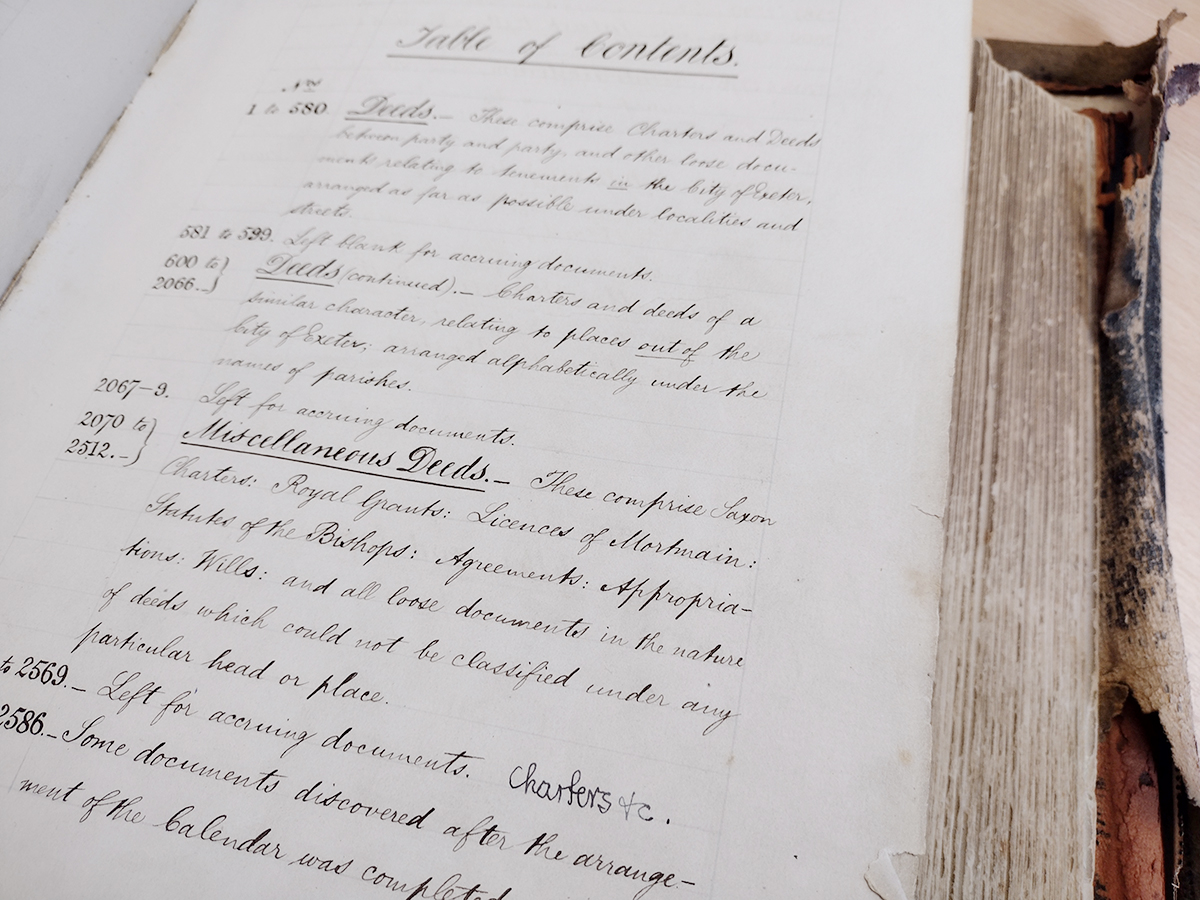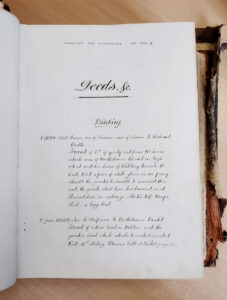 By Ellie Jones, Cathedral Archivist
By Ellie Jones, Cathedral Archivist
“To the historian and the archaeologist these Archives are an almost unworked mine of priceless worth… the careful student of these records will find most valuable and hitherto unknown materials for the history of the Cathedral, the City, and the County – and illustrative of the social history of the people – which cannot be obtained elsewhere.” – Stuart Moore, 1873.
On 22nd October 1869 Stuart Moore – of the Public Record Office and Ecclesiastical Commissioners – wrote to the Dean & Chapter with his proposals for taking the Cathedral’s records in hand: putting them in chronological order, stamping them with the name of the Dean & Chapter, numbering each one consecutively, and also numbering the shelves and drawers where they were housed “so that there might be a place for everything and everything in its place”. He quoted £3 3s 0d a day and thought it might take six weeks to two months, working during vacations so he could continue with his other professional work.
In the end Moore spent a full year – from 30th October 1869 to 21st November 1870 – working systematically through the documents in the Exchequer room, and was paid £88 4s. On 15th July 1873 he signed off on the completion of his final “Calendar” of the records. This hefty leather-bound volume contains summary descriptions of about 5000 documents, all carefully written in neat copperplate handwriting.
Moore also presented recommendations to the Dean & Chapter regarding appropriate storage for the precious paper and parchment records, their “place of deposit was unfortunately chosen; for being on the northern side of the Cathedral, the sun seldom or never shines upon it: the massive walls have drawn up the damp from below, and the documents deposited in wooden presses standing against the walls have suffered terribly… the room had until I came into it neither ventilation nor warmth”. Furthermore, the shelves and drawers were “built of fir which is beginning to take the dry rot and to be attacked by worms, which are not very good neighbours for records”.
 Happily the records did move from their wormy shelves in the Exchequer room, residing for many decades in the 1880s Pearson cloister library, where they stayed until 2012, when the current Library & Archive facility, with a strong room and reading room, opened. Cataloguing is one of the many ongoing aspects of work in the Cathedral Archives, and we are indebted to people like Stuart Moore who started the process. Many of Moore’s descriptions have since been corrected and expanded, and more than 2500 further deposits – amounting to many thousands of individual items – have been added, but his work was instrumental in unlocking the contents of the Cathedral Archives.
Happily the records did move from their wormy shelves in the Exchequer room, residing for many decades in the 1880s Pearson cloister library, where they stayed until 2012, when the current Library & Archive facility, with a strong room and reading room, opened. Cataloguing is one of the many ongoing aspects of work in the Cathedral Archives, and we are indebted to people like Stuart Moore who started the process. Many of Moore’s descriptions have since been corrected and expanded, and more than 2500 further deposits – amounting to many thousands of individual items – have been added, but his work was instrumental in unlocking the contents of the Cathedral Archives.